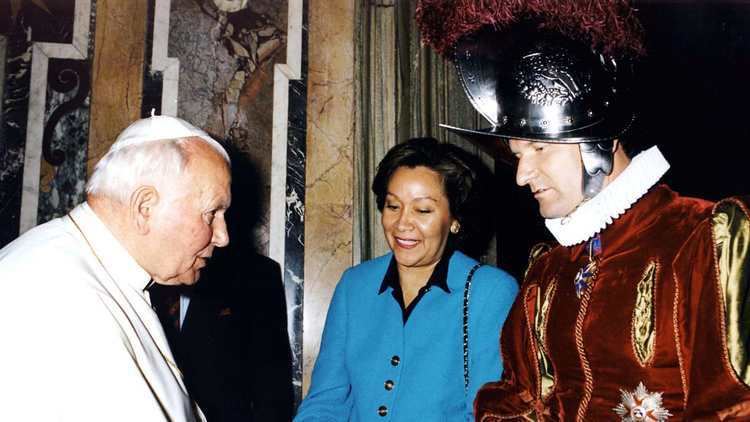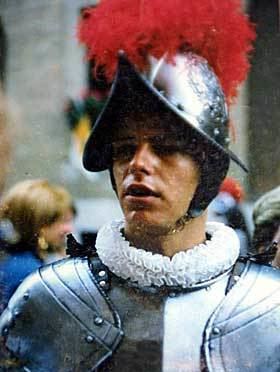Name Alois Estermann | ||
 | ||
Alois Estermann (October 29, 1954 – May 4, 1998) was a senior officer of the Pontifical Swiss Guard who was murdered in his apartment in the Vatican City.
Contents

Early life

Estermann was born in Gunzwil, in the Canton of Lucerne. He grew up as a member of a farming family living near Beromunster. In 1975 he graduated with a degree in commerce from a business school in Lucerne.
Career

From 1975-76 Estermann attended the officer training school for the Swiss Army at Thun. He subsequently reached the rank of lieutenant as a Swiss reserve officer. In 1977 Estermann served briefly in the Pontifical Swiss Guard at the Vatican. He then lived in Argentina for two years. In July 1980 he rejoined the Swiss Guard, as an officer. In 1983 he was promoted to major and in 1987 to lieutenant-colonel. In 1998 he was appointed as Commander of the Swiss Guard.
Death

According to official Vatican statements, Estermann and his Venezuelan wife, Gladys Meza Romero, were killed on 4 May 1998 by a young Swiss Guard Vice-Corporal Cédric Tornay, who then committed suicide. Estermann, formerly acting commander of the Swiss Guard, had been confirmed in his position the same day. Tornay had earlier been reprimanded for breaches of discipline and had been passed over for a medal routinely awarded to Guards after three years of service. A note written by Tornay shortly before the murder indicates that he regarded Estermann as a harsh martinet with a personal bias against the Vice-Corporal.
Pope John Paul II personally celebrated Estermann's Funeral Mass in the church of Saints Martin and Sebastian.
Theories concerning his death
The homicide has led to various theories as to why the murder happened.
In a recently published history of the modern Vatican's military and police forces Professor David Alvarez, of the Department of Politics at St. Mary's College of California, summarizes the various conspiracy theories, before concluding that they "either remain unsubstantiated or have been thoroughly discredited".
